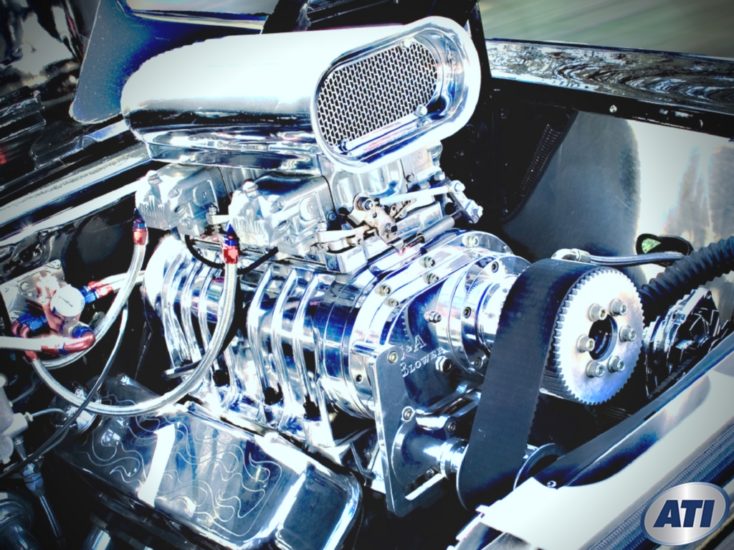What’s the Difference Between Diesel and Gas Engines?
.jpg)
Those of you with an interest in the automotive industry may already be aware that diesel engines have greater compression ratios and provide more power than their gasoline counterparts, but you may be unaware as to why. While the main difference between diesel and gas engines lies in the timing of the fuel delivery system, this one difference produces far reaching consequences that allow the larger diesel engines of the modern era to operate with greater efficiency than gasoline models could ever provide.
Comparison of the Combustion Cycles of Diesel and Gasoline Engines
To understand the main difference between diesel and gasoline engines, it can be helpful to compare each of the four strokes that pistons in each engine type undergo. Both diesel and gasoline engines have intake, compression, ignition, and exhaust strokes in their cycles, and both are designed to ignite fuel and convert it to mechanical energy.
The following occurs in each engine type during each stroke:
- Intake stroke
The first downward stroke of the piston in both diesel and gasoline cycles. In a gasoline engine, both air and fuel enter the piston during this stage; if the system uses a carburetor, the air and fuel is mixed long before it reaches the chamber, while a port injected system injects the fuel outside of the piston just before entry. Diesel engines, on the other hand, allow only air to enter the piston during the intake stroke. - Compression stroke
The upward motion of the piston compresses the contents of the cylinder at this stage. Since it is highly undesirable for the mixture of air and fuel in gasoline engines to spontaneously ignite, the compression ratios of gasoline engines must remain much lower than diesel engines, where the compressed air is heated in excess of 540 degrees Celsius during each compression stroke. - Ignition stroke
In gasoline engines, the mixture of compressed air and fuel is ignited during the downward stroke of the piston with the help of a spark plug during the ignition stroke. Conversely, diesels engines use direct fuel injection to inject a fine mist of fuel into the cylinder during the beginning of the ignition stroke; because of the high temperatures within the diesel cylinder, the fuel spontaneously ignites without the help of a spark plug. - Exhaust stroke
There is no appreciable difference between diesel and gasoline engines during this upward and final stroke of the combustion cycle, as the exhaust is simply forced through the exhaust valve in both engine types at this stage.
Higher Compression Leads to Greater Power and Fuel Efficiency
The effects on power that the higher compression ratios in a diesel engine are able to achieve are impressive. Because gasoline engines use lower compression to prevent the spontaneous ignition of fuel and air which creates excessive heat and leads to engine knocking, their compression ratios range from 8:1 to 12:1. Diesel, on the other hand, relies on the higher temperatures achieved with greater compression ratios to ignite the fuel; the ratios for these engines range from 14:1 to 25:1.
Greater compression translates into greater amounts of power available to do mechanical work, but it also translates into more efficient use of fuel. In addition, diesel fuel itself contains a higher amount of stored energy per gallon when compared to gasoline. These two factors combined allow diesel engines to deliver the improved mileage they are known for when compared to equivalent gasoline models.
Glow Plugs or Computer Control Solve Diesel Cold Starting Issues
Because the compressed air within diesel engines must obtain a temperature high enough to spontaneously ignite fuel, diesel engines typically need help to achieve those temperatures when starting cold. Traditionally, diesel engines used glow plugs, or electrically heated wires, to heat the interior of each cylinder enough to allow the engine to start. In the larger, more advanced diesel engines of today, computer control delays the timing of fuel injection during cold weather to allow greater compression of the air within each cylinder, creating more heat and allowing the engine to start without the help of glow plugs.
Finished the program and got a spot in the BMW STEP program because of the school. Because of ATI I have a job with a major manufacturer. Thank you!
Posted by Jeremy Fisher on Friday, August 14, 2015
Help Keep the Nation Moving!
If you are interested in a career in the field of automotive technology and have an affinity for engines, then pursuing an Automotive/Diesel Technology diploma from the Advanced Technology Institute could be a great decision! We offer accelerated learning programs that allow you to complete your training faster than you may think and leave you ready to begin your career helping to keep the nation’s heavy vehicles running. Contact us today to get started!
DISCLAIMER – Advanced Technology Institute (ATI) makes no claim, warranty or guarantee as to actual employability or earning potential to current, past or future students or graduates of any educational program offered. The Advanced Technology Institute website is published for informational purposes only. Every effort is made to ensure the accuracy of information contained on the AUTO.edu domain; however, no warranty of accuracy is made. No contractual rights, either expressed or implied, are created by its content.
For more information about Advanced Technology Institute or any of our programs click here: http://www.auto.edu/ or http://ow.ly/VoydP.
Industry Knowledge
Welcome to the Advanced Technology Institute's Blog, your resource for industry insights and discussions on technologies shaping the future of automotive, heavy vehicle, hvac, welding, and other related career paths.
Explore how ATI's curriculum and hands-on learning opportunities can propel your career in the tech-driven world.


.jpg)